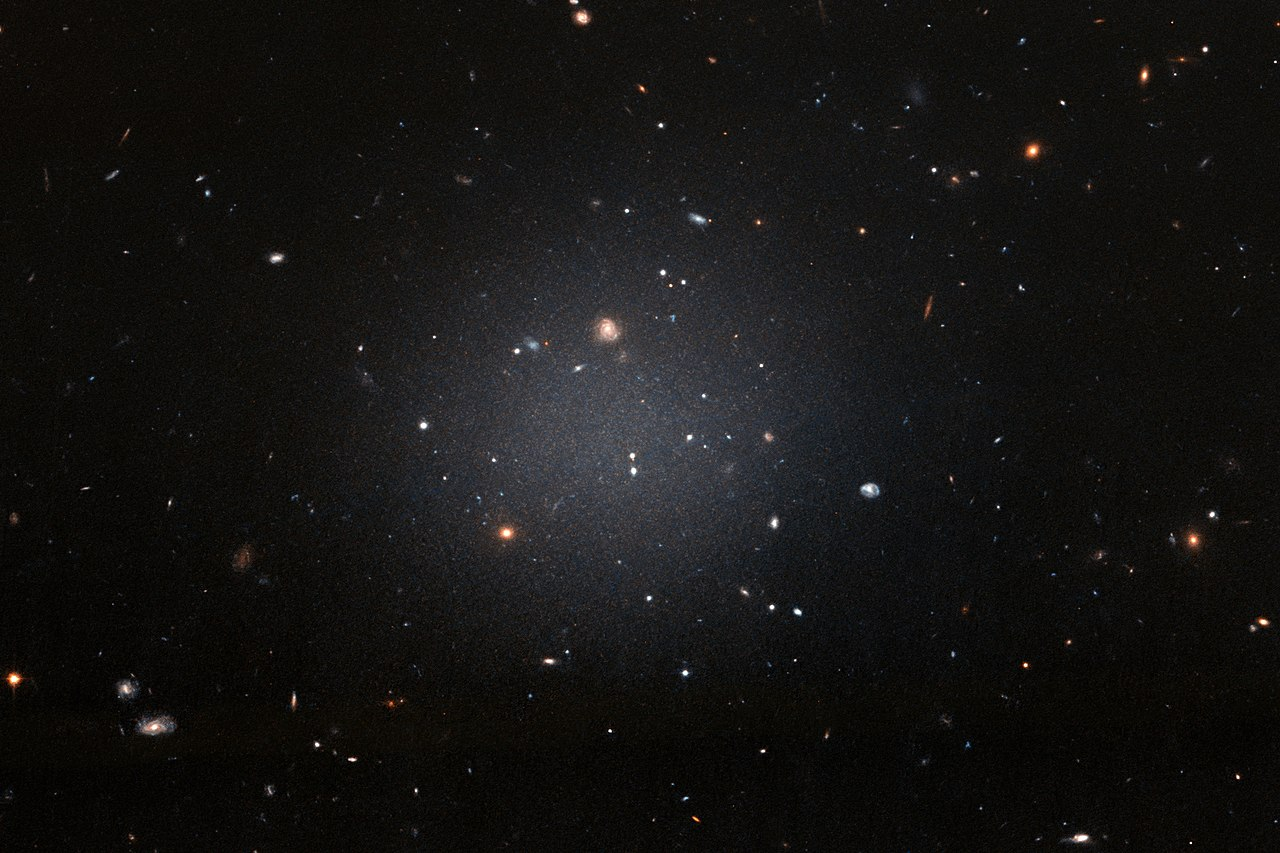The Ultra Diffuse Galaxies (UDG:s) or extreme low luminosity galaxies are places where are two extremities of the dark matter should exist. So there are cold and hot dark matter if those things are real. Those galaxies are very old star cluster formations. And UDG:s are full of neutron stars, black holes, and white dwarfs.
The material density of those galaxies is less than 1% of the Milky Way. But their mass can be the same as regular galaxies. That means most of the material that is inside those galaxies is in invisible form. Of course, lots of materials that are in those galaxies are in black holes and other objects that are not producing energy.
XXXXXXXXXXXXXXXXXXXXXXXXXXXXXXXXXXXXXXX
Dark matter means gravitational effect. That is the second dominating thing in the universe. But the thing that is forming that effect is invisible.
Dark matter is the gravitational effect that is one of the most mysterious things in the universe. There are a couple of theories. That is making possible why researchers cannot see that mysterious thing.
1) Dark matter is a virtual particle. That forms when gravitational waves are impacting. So the standing gravitational waves can make it possible that the gravitation would have a similar effect on the material.
2) If dark matter is not self-gravitating that thing can turn dark energy to gravitation. In that model, the dark matter forms a whirl of dark energy that acts like gravitation.
The reason, why some researchers believe that dark matter is not self-gravitating is that UDG:s are spiral-shaped structures. So there is a fascinating model that dark matter is the thing that forms dark energy in a tornado. And that quantum tornado will pull particles.
When that kind of quantum tornado forms. Energy travels from the higher energy level to the lower energy level. That thing acts like a vacuum that pulls wave motion inside it. And then the object starts to ride with that wave motion. In that case, dark matter is the spontaneous quantum tornado that acts like real particles.
There is mentioned that if dark matter is self-gravitating those UDG:s should be ball-shaped. So dark matter should also pull visible material in that extremely thin plasma to ball-size form.
XXXXXXXXXXXXXXXXXXXXXXXXXXXXXXXXXXXXXXXXXXXXXXXXXXXX
Image 2) NGC 1052-DF2, an ultra diffuse galaxy. (Wikipedia)
A large part of the material is stored in black holes and neutron stars.
If there are black holes in the UDG, that black holes will not send as powerful X- and gamma rays as black holes that are in the Milky Way. Because UDG:s is less material that can fall in those black holes.
The fact is that in UDG:s there is the possibility to see the shadow of the halo of dark matter. And the thing that makes UDG:s very interesting is that they are not ball-shaped objects.
But there is the possibility that the ball of dark matter that surrounds those galaxies pulls them to disk. In this model, UDG is in the equator of the invisible ball of dark matter. And gravitation pulls that disk from both sides. That symmetric gravitation effect turns the visible material of ultra-diffuse galaxy to disk-shaped.
So there is a possibility that at least another type of dark matter is not self-gravitating. There is the possibility that the dark matter is the gravitational effect is virtual particles. If standing gravitational waves are possible.
That explains why we cannot see dark matter. In that model impacting gravitational waves form standing wave motion or standing gravitational waves. Those short-living gravitational centers could explain why we cannot see dark matter. But if dark matter doesn't create its gravitational effect itself, that thing means that this thing can turn dark energy into gravitational waves.
https://scitechdaily.com/dark-matter-halos-of-newly-discovered-ultra-diffuse-galaxies-are-very-odd/amp/
https://en.wikipedia.org/wiki/Dark_energy
https://en.wikipedia.org/wiki/Dark_matter
https://en.wikipedia.org/wiki/Ultra_diffuse_galaxy
Image: https://scitechdaily.com/dark-matter-halos-of-newly-discovered-ultra-diffuse-galaxies-are-very-odd/amp/
Image 2) https://en.wikipedia.org/wiki/Ultra_diffuse_galaxy
https://artificialintelligenceandindividuals.blogspot.com/






No comments:
Post a Comment
Note: Only a member of this blog may post a comment.